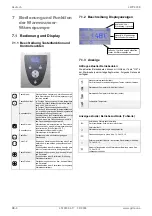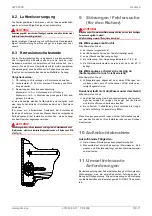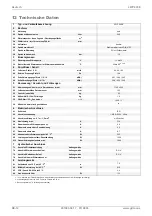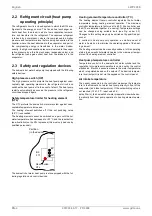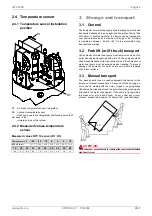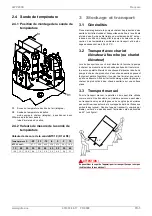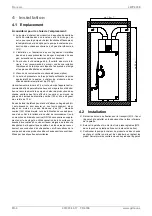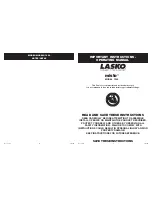
www.gdts.one
451903.66.17 · FD 9908
EN-7
LWP 200E
English
5 Installation
5.1 Connecting the water pipes
The nominal pipe widths for the on-site installation must be deter-
mined by taking into account the available water pressure and
any pressure drops expected to occur in the pipework.
Water pipes must be installed in compliance with DIN 1988 (see
Appendix "Hydraulic integration diagram – for example, a pres-
sure reducing valve must be used if water pipe pressure is unac-
ceptably high); also observe local regulations for domestic water
installations.
Both rigid and flexible water pipes may be used. Observe the cor-
rosion behaviour of the pipework materials to avoid corrosion
damage (see the Chapter “Start-Up”).
NOTE
º
Domestic hot water, cold water, circulation connections:These pipe
nipples contain plastic inserts, the purpose of which is to protect against
corrosion (in particular to the pipe nipple flange surfaces). These plastic
inserts remain in their positions after installation.
ATTENTION!
!!
When installing the on-site pipework, ensure that the pipes are not
contaminated (flush pipes before connecting the domestic hot water heat
pump if necessary).
5.2 Connecting the condensate
hose
The condensate hose is fed through the foil cladding at the side.
It should be routed in such a way that the condensate produced
(during heat pump operation) can flow away freely.
NOTE
º
There is a pressureless seal valve at the end of the condensate hose,
which must be
relocated accordingly
if the condensate hose is
shortened (the valve can be easily removed and re-inserted).
This valve is of special importance if longer air hoses are fitted to
the device, or if a filter is installed upstream on the exhaust air
side. The condensate should be drained into a siphon (also refer
to the maintenance information in section 8.1).
5.3 Electrical connection
The domestic hot water heat pump is wired ready for use; power
is supplied via connection cables plugged into an earthed wall
socket (~230 V, 50 Hz). This socket must remain accessible
after installation.
Connection of external components:
External heating element control
It is possible to optionally activate the heating element parallel to
the "heating element” switch on the operating panel of the do-
mestic hot water heat pump via an external switch (e.g. timer).
For this connection, a floating contact on the external switchgear
is required. Furthermore, a cable (min. 2 x 1.0 mm
2
/ max. cable
outside diameter 10 mm) must be inserted into the device and at-
tached to connection 7 and 8 of terminal strip X3.
External electronic sensor
An "air quality sensor" or a "humidity sensor" can be fitted option-
ally. The connection takes place on the terminal strip X3.
For detailed information on integration, refer to the circuit dia-
grams in the appendix.
6 Commissioning
6.1 Domestic hot water system
ATTENTION!
!!
The domestic hot water heat pump must only be operated when filled with
water.
Domestic hot water system requirements
The following materials can be used in the consumer's domestic
hot water system:
Copper
Stainless steel
Brass
Plastic
Depending on the materials used in the domestic hot water sys-
tem (customer installation), material incompatibility may lead to
corrosion damage. This especially applies to zinc-plated materi-
als and materials containing aluminium. If there is a risk of water
contamination during operation, it may be necessary to install a
filter.
Commissioning the domestic hot water system
All installations for the water circuit and air circuit, as well as
all electrical installations, must have been carried out cor-
rectly and fully completed.
The domestic hot water system must be filled using an exter-
nal connection.
Bleed the domestic hot water system (open domestic hot
water taps at the highest extraction points until there are no
more traces of air).
Check the entire domestic hot water system for leaks.
Connect the voltage supply.
Switch on the heat pump on the keyboard.
The desired hot water temperature is set on the keyboard
(up to 60 °C). A relevant heating-up time is always required
until the selected temperature level is reached (hot water
temperatures over 45 °C can significantly increase the heat-
ing-up time).


